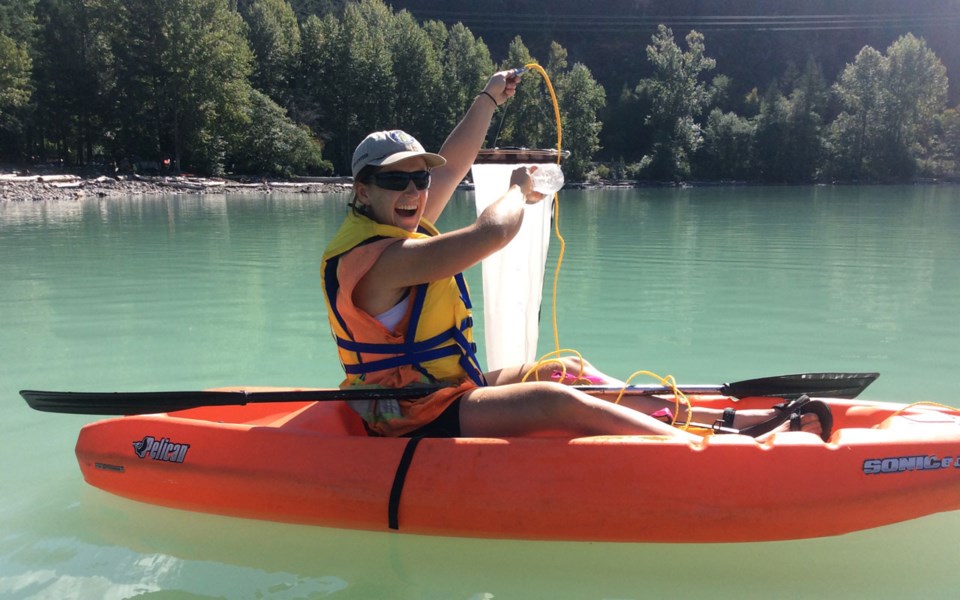Despite the COVID-19 pandemic, Sea to Sky Invasive Species Council (SSISC) saw growth in many areas in 2020.
For one, its revenue was about $520,000, up 21 per cent from 2019, thanks to a mix of COVID-19-related wage subsidies, federal programs, and funding applied for in 2019. But the non-profit organization also saw a slight uptick in the amount of work it accomplished, too.
“We did 1,046 [site surveys] in 2019,” said Clare Greenberg, executive director with SSISC. “This year, it was 1,054 surveys. We started a bit later. It took a minute to get our COVID protocol in place.”
In total, they also: surveyed and mapped about 1.2 hectares of invasive plants with 39.2 per cent of previously treated sites showing no signs of regrowth; conducted 318 mechanical treatments at 240 sites and 251 chemical treatments at 157 sites; and carried out treatment monitoring on 77 sites, according to the organization’s annual report, released earlier this month.
“It was definitely a year where we had to sort of pivot and think about how we were going to deliver our programs in a pandemic year,” Greenberg said. “Normally, with education and outreach it’s in-person and through events like the community weed pull or in-person training. That was the side of our program that really needed to adapt and change.”
To that end, many of the educational programs moved online. “It’s something we’ve wanted to do for awhile, but we haven’t had the capacity to do it in busy field seasons,” said Greenberg. “Thanks to different wage subsidies—plus our funding we accessed from applying in previous years—we were fully staffed.”
Likewise, after a pause in the spring to figure out new protocols, they were able to assemble fieldwork staff for the summer.
“Normally we would do a lot of private land treatments, but [last] year we focused on sites that were a bit more remote and out of busy, public areas,” Greenberg said. “The team adapted and hit the ground running.”
SSISC’s five-year strategic plan also concluded in 2020, which means this year the board and staff are looking ahead to the next half decade.
“There were a few things we weren’t able to achieve in 2020 that get rolled over,” Greenberg said. “This week, we’re doing another strategic planning session with board and staff to draft a new five-year plan for feedback and input.”
One change she would like to see for the future is the provincial government draft and adopt an Invasive Species Act of B.C. In part, that would help groups like SSISC grow invasive animal programs.
While there’s guiding legislation for invasive plants, the same is not true for animals. Some examples include Zebra and Quagga Mussels—which SSISC has monitored for at three local lakes last year, taking 25 samples (all of which were negative)—and goldfish and koi, which have been found in Pinecrest Lake, Millars Pond, Alta Lake, the River of Golden Dreams, Jordan Creek, and One Mile Lake.
A new project for 2021 is monitoring Howe Sound for European Green Crab, which were initially found on the West Coast of Vancouver Island before they travelled to the southern tip and to some Gulf Islands.
“There’s a high concern [the crabs] might make [their] way into Howe Sound,” Greenberg said. “We’re going to do test trapping with [Fisheries and Oceans Canada] to set up the first phase of a volunteer program where people can check traps for European Green Crab, starting with around eight volunteers for this year. It’s a new program, which is really exciting.”
Meanwhile, the organization is also getting ready to staff up again for summer positions.
To keep up to date with that, as well as find out more about the organization’s April AGM and future projects, sign up for its newsletter at ssisc.ca or follow it on Instagram, Facebook, or Twitter.


.jpeg;w=80;h=120;mode=crop)